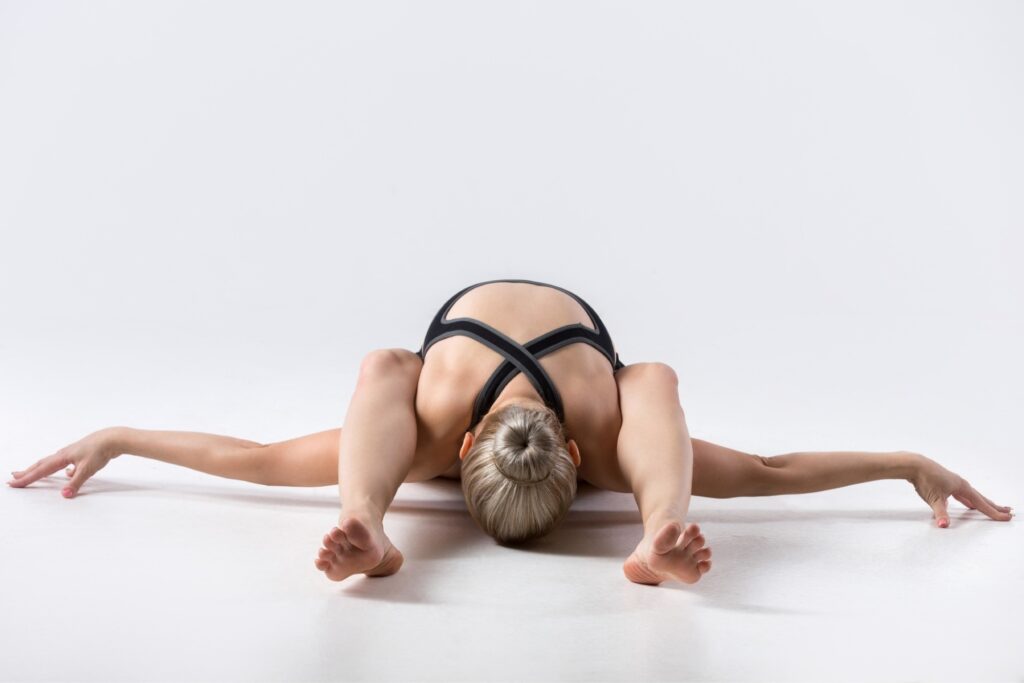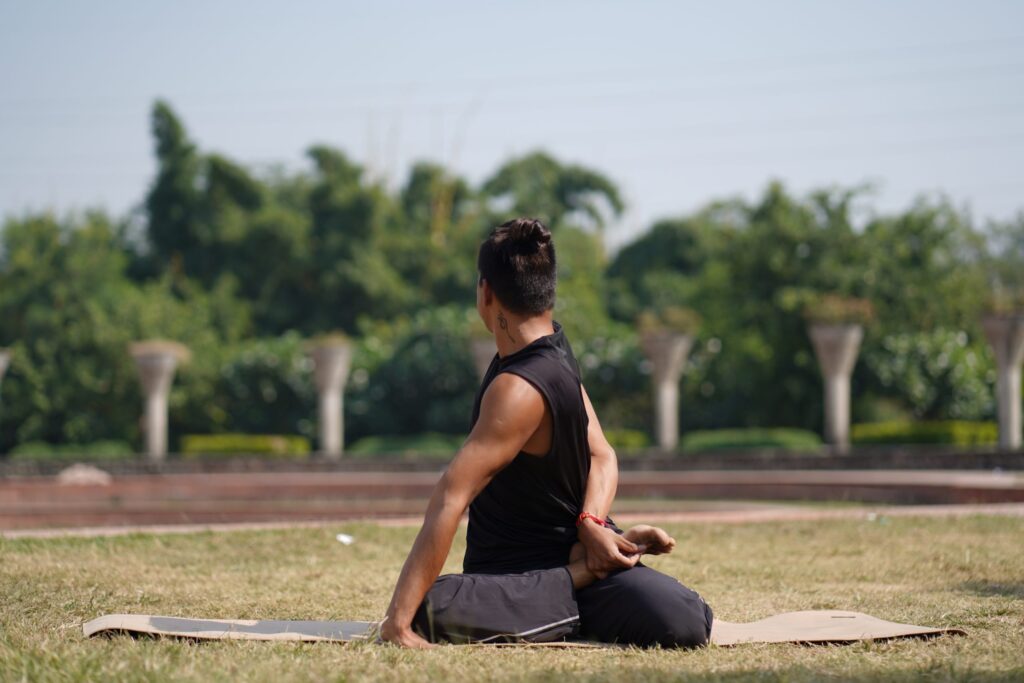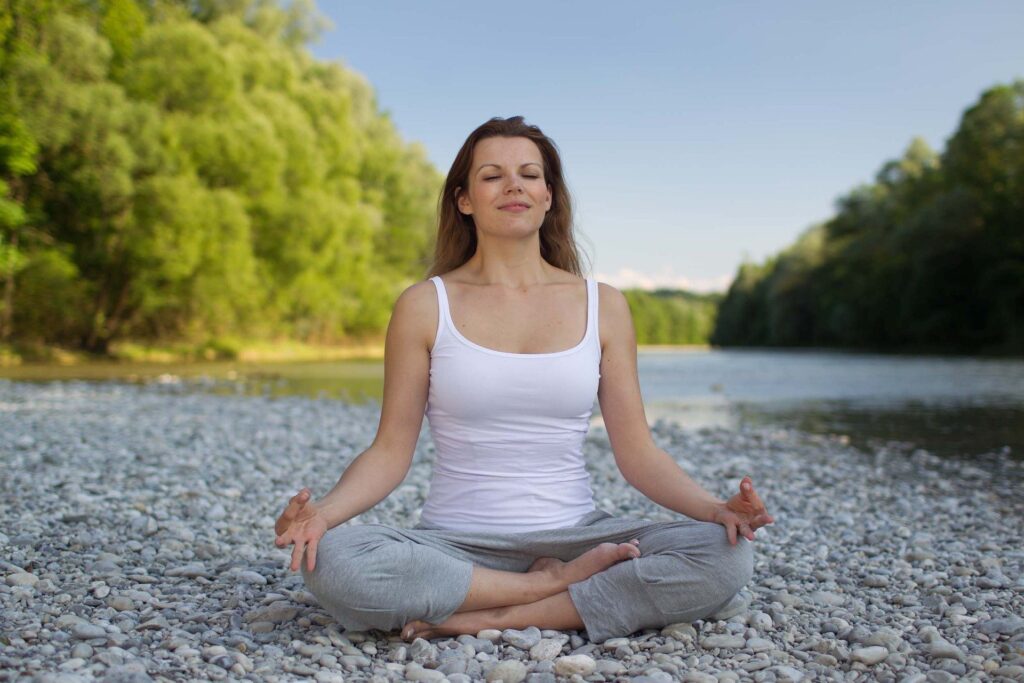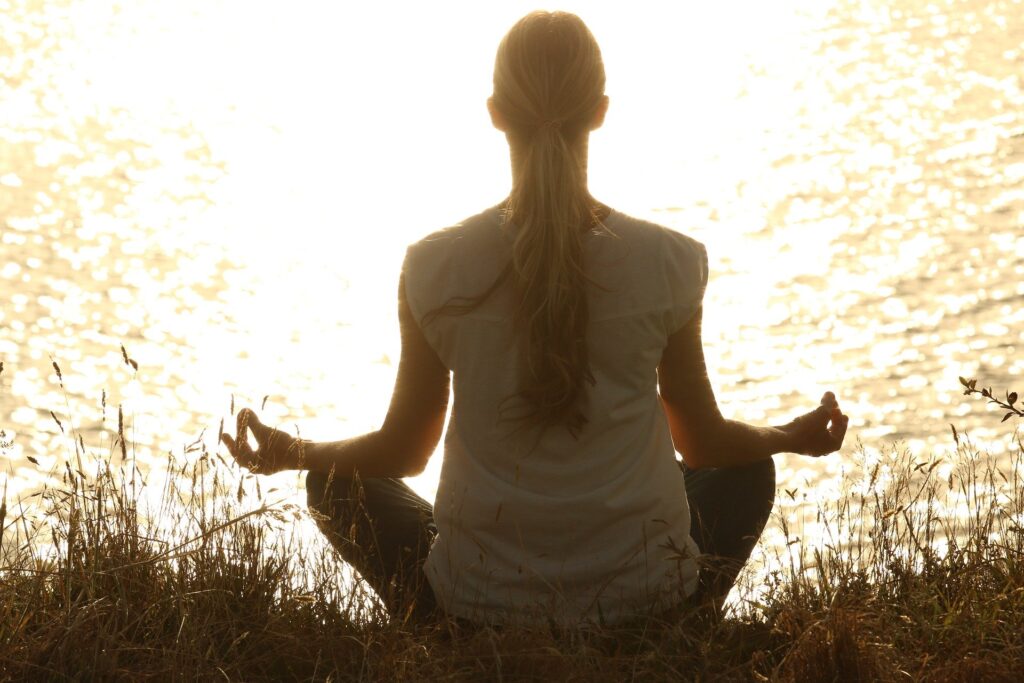Kurmasana ( कुर्मासन ) is also known by different names ‘Tortoise pose‘ and ‘Turtle pose’. This pose is a part of Hatha yoga that promotes a healthy mind-body coordination and offers great stretching of back, biceps, triceps, quads calves, pelvis, groins etc. Here, we’ll discuss various such health benefits, steps and precautions for performing ‘Kurmasana‘.
The Sanskrit name, ‘Kurmasana‘ is the combination of two words ‘Kurma’ ( कुर्म ) meaning ‘Tortoise‘ or ‘Turtle‘ and ‘Asana‘ ( आसन ) means ‘pose‘ or ‘seat’. In this forward bend pose, your hands are spread from under the thighs, legs-hands are stretched and the back looks like a shell of tortoise. This asana is considered as one of the best hip-opening exercise.
Kurmasana is often associated with the Lord Vishnu’s Kurma Avtar, his incarnation in the form of a ‘Turtle‘ or ‘Tortoise’. Ancient Indian scriptures such as Ahirbudhnya Saṃhitā, Sritattvanidhi and Gheranda Samhita extensively mentioned about Kurmasana. This asana stimulates Ajna Chakra ( Third Eye ) and Manipura Chakra ( Solar Plexus ).
Kurmasana is a part of Ashtanga Yoga that helps to reduce pain of knees, lower back, joints etc. This deep-seated forward bend makes you feel centered by allowing your senses draw to detach from the swirling distractions. This experience is known as Pratyahara which is very similar to a tortoise who withdraws itself in its shell when feel threatened.
How to practice Kurmasana – The Tortoise Pose
To get the maximum benefits follow the below mentioned step – by – step guide to perform Kurmasana ( The Tortoise Pose ) :
Step 1 :
- Begin this posture, by sitting in Dandasana with upright back and legs extending in front of you.
Step 2 :
- Spread your legs shoulder-width apart while keeping your hands close to your hips on the floor.
Step 3 :
- Bend your knees slightly off the ground & flex your feet so that toes are pointed towards ceiling.
Step 4 :
- Now, gradually bend your upper body forward in such a way that the chest touches the ground.
Step 5 :
- Slide the arms out to the sideways underneath the slightly raised knees with palms facing down.
Step 6 :
- Keep the elbows locked, arms low to the ground & broaden collarbones as you press shoulders.
Step 7 :
- Breathe slowly & touch your chin on the floor with closed eyes. Hold the pose for 40-50 seconds.
Step 8 :
- To release the pose, bend your knees and lift them to a point that allows you to retract your arms.
Step 9 :
- Finally, raise the upper body and draw your arms to sides. Practice the pose for 3-4 times & relax.
Modifications and Variations
Supta Kurmasana, Ardha Kurmasana and Uttana Kurmasana are Three Major Variations of Kurmasana or Tortoise Pose.
To deepen experience during Kurmasana, try these following modifications and find a variation that works well for you :
- If you are unable to touch your chest to the mat, then you may keep your head at some distance from the ground.
- Before you start practicing Kurmasana, always do warm up stretching exercises for lower back, hips, thighs & legs.
- If you’re uncomfortable in the pose, then don’t interlock fingers behind your back and shoulders under your thighs.
- You may also use a block or blanket to place your chest up rather than leaning fully into the stretch on the ground.
Precautions and Contraindications
- Avoid its practice if you are suffering from sciatica, chronic arthritis, herniated disks or strained lower-back muscles.
- Avoid the pose if you’ve pain or injury in your arms, back, neck, spine, shoulders, elbows, knees, hips, thighs, legs etc.
- Always respect the body’s limitations and don’t overstrain your weak and rigid muscles as you practice Kurmasana.
- Avoid practice of this pose during their menstrual cycle & pregnancy because it creates intense pressure on uterus.
- Avoid the pose if you’ve migraine, cervical disorders, slip disc or been through any recent abdominal or back surgery.
Benefits of Kurmasana – The Tortoise Pose)
Following are the health benefits of Kurmasana – The Tortoise Pose that you would attain gradually with its regular practice :
This asana helps to improve digestion, blood circulation, flexibility, relieves body pain, self awareness & sub–consciousness.
1. Kurmasana Improves Functioning of Respiratory System
- As you practice this asana your lungs & chest get contracted that works towards better functioning of respiratory organs.
- Furthermore, deep opening of diaphragm fills your lungs with fresh oxygen & cure respiratory problems such as Asthma.
Also Read :
2. Kurmasana is the Best Stretching Exercise for Your Body
- Kumarasana offers deep stretching to your chest, shoulders, spine, back, arms, abdomen, legs, thighs, hips & hamstrings.
- Moreover, this asana also release stiffness, relieves back pain, improves flexibility and supports different range of motion.
Also Read :
3. Kurmasana Improves the Strength of Different Muscles
- Daily practice of this pose makes the waists, hips, hamstrings, shoulders, neck, legs, head, wrists, spine & thighs stronger.
- Furthermore, The Tortoise Pose also invokes the full body relaxation by providing massaging effect to muscles and joints.
Also Read :
4. Kumasana Improves Digestion and Cures Related Disorders
- The Tortoise Pose involves forward bend that gives gentle massage to abdominal area and activates the internal organs.
- Apart from this, Kurmasana also cures many stomach related disorders such as indigestion, constipation and flatulence.
Also Read :
5. Kumasana improves your Memory and Concentration Levels
- The regular practice of Kurmasana improves your memory & concentration power by increasing blood flow to the brain.
- Moreover, this asana rejuvenates your mind and body, make you feels fresh and relieves stress, anxiety and depression.
Also Read :
Preparatory Poses
- Adho Mukha Svanasana,
- Utkatasana,
- Garudasana,
- Uttanasana,
- Dhanurasana
- Paschimottanasana
- Padhastasana
- Trikonasana
- Marjariasana,
- Utthita Parsvakonasana,
Preparatory Poses
- Baddha Konasana
- Malasana,
- Marichyasana,
- Upavistha Konasana
- Bhujangasana
- Matsyasana
- Chakrasana
- Urdhva Dhanurasana
- Kapotasana
- Bharadvajasana
Tips For Beginners
- Kurmasana is an advance level yoga asana so always practice some warm-up exercises before you start practicing this asana.
- You can practice Kumasana both in morning and evening with a gap of two hours gap between your meal and your practice.
- If you’ve any medical concerns, consult doctor and practice it under the supervision of an certified yoga teacher / instructor.
Conclusion
Kurmasana offers health numerous benefits such as improving blood flow towards reproductive organs, eases sciatica pain, prevent diabetes, reduce obesity, lengthens spine, cures hernia and other disorders related to heart, lungs, liver, kidneys etc.
The Tortoise Pose allows a man to withdraw himself from mental problems just like a tortoise who hides itself in its armor upon the challenging situations. So try out this pose after a tiring day and do share views on this blog in the comment section.
Also Read :
FAQs Related to Kurmasana and its Health Benefits
Do the practice of Kurmasana really benefits one's mental health ?
Kurmasana helps to cure insomnia by relaxing your nerves, calming your mind and body and improving awareness of the breath. Plus, this asana cultivates deep tranquility and prepares mind for meditation.
Do the practice of Tortoise Pose help in reducing body weight ?
As you perform Kumarasana or The Tortoise Pose, your abdominal muscles get contracted that improves your metabolism rate and thereby aids to reduce excess fat from your body particularly belly and thighs.




